#Dussehra rituals
Explore tagged Tumblr posts
Text
Happy Dussehra #treanding#viralshorts#trendingshorts#dussehra
Happy Dussehra is a time to celebrate the victory of good over evil! In this, we will dive into the traditions, rituals, and unique ways to make this Dussehra extra special for you and your loved ones. Whether it's learning about the mythology behind the festival or discovering modern ways to celebrate, this has everything you need to know. From Ramayana’s lessons to decorating your home, and from organizing grand Dussehra events to intimate family gatherings, this is your ultimate guide.
Call:7799799221 Website:www.manasadefenceacademy.com
#HappyDussehra2024#DussehraCelebration#FestivalOfGoodOverEvil #DussehraTraditions#dussehrafestival#CelebrateDussehra#VictoryOfGoodOverEvil #DussehraVibes#DussehraSpecial#DussehraFacts#trending#viral#manasadefenceacademy
#Happy Dussehra#Dussehra celebration ideas#Dussehra 2024#Dussehra festival#Dussehra traditions#how to celebrate Dussehra#good over evil festival#Dussehra rituals#Ramayana and Dussehra#Dussehra family celebration#Indian festivals#Dussehra story#Dussehra activities#Dussehra home decoration#Dussehra festival significance#Dussehra puja#Dussehra celebrations#top Dussehra facts#Dussehra special festival#Dussehra in India
0 notes
Text

Tirupati Balaji Padmavati Dasara Golu Dolls
Celebrate the divine aura of Lord Venkateswara and his consort Padmavati during Dasara with our beautiful Golu Doll set. These dolls are made with care and attention to detail, and they will bring blessings and grace to your festive celebrations. They are a symbol of spirituality and tradition, and they are sure to make your Dasara celebrations even more special.
Purchase This Tirupati Balaji Padmavati Dasara Golu Dolls from Puja N Pujari.
#spiritual#temple#hinduism#festival#pooja#ritual#india#tirupati#balaji#padmavati#dussehra#navratri#october#wednesday
2 notes
·
View notes
Text
Vijayadashami/ Dussehra 2024: Embracing the Spirit of Giving and Compassion

Vijayadashami, also known as Dussehra, is a significant Hindu festival that commemorates the victory of good over evil. It marks the culmination of the nine-night Navratri celebration and heralds the upcoming Diwali festivities.
Key Aspects of Vijayadashami:
Celebration of Divine Victory: The festival honors the goddess Durga and Lord Rama for their triumphs over demonic forces.
Spirit of Giving: Vijayadashami emphasizes the importance of charity and compassion. Many people engage in acts of generosity to attract blessings and prosperity.
Ravan Dahan: One of the most anticipated events is the symbolic burning of Ravana’s effigy, representing the defeat of evil.
Ravan Dahan in 2024:
Date: Dussehra will be celebrated on October 24, 2024.
Auspicious Muhurat: The most auspicious time for Ravan Dahan is expected to fall between 6:00 PM and 8:00 PM on this day.
Cultural Significance of Dussehra:
Mythological Roots: The festival is deeply rooted in Hindu mythology, particularly the epic Ramayana.
Unity and Tradition: Dussehra promotes unity and strengthens cultural traditions.
Ayudhapuja: A related celebration, Ayudhapuja, honors tools and instruments, symbolizing craftsmanship and skill.
Dusshera Customs:
Ramlila: Enactments of the Ramayana story are performed in many regions.
Effigy Burning: The burning of Ravana’s effigy is a central ritual.
Puja: Various deities are worshipped during the festival.
Generosity: Charity and giving are integral parts of the celebrations.
Community and Social Cohesion:
Shared Experiences: Vijayadashami fosters a sense of community through shared rituals, meals, and celebrations.
Cultural Preservation: The festival helps preserve cultural heritage and traditions.
Inclusive Atmosphere: Vijayadashami promotes unity and inclusivity among people of different backgrounds.
What deities are worshipped during Dussehra?
Goddess Durga, Lord Rama, and Lord Ganesh are commonly worshipped during Dussehra.
What is the role of Daan (donation) during Ayudhapuja?
Charity and giving are believed to bring blessings and prosperity.
How does Dussehra promote community spirit?
Dussehra strengthens community bonds and promotes cultural heritage.
When is Ravan Dahan celebrated in 2024?
Ravan Dahan will be celebrated on October 24, 2024.
What is the significance of Ayudhapuja?
Ayudhapuja is a celebration honoring tools and instruments, symbolizing craftsmanship and skill.
What are some other customs associated with Dussehra?
Ramlila, effigy burning, puja, and generosity are some of the other customs associated with Dussehra.
#narayan seva sansthan#ngo#charity#donation#Dussehra 2024#Dussehra 2024 puja muhurat#dussehra 2024 date in india#Dussehra 2024 Date#Dussehra 2024 vrat katha#dussehra 2024 significance#dussehra 2024 time#dussehra 2024 rituals#vijayadashami 2024#vijayadashami 2024 date and time#vijayadashami 2024 date
0 notes
Text
When Is Shardiya Navratri 2024: Dates, Colours, Rituals, And Significance Of The 9-day Festival | Culture News
Shardiya Navratri, also called Shrad Navratri, is a major Hindu festival that celebrates the nine forms of Goddess Durga. It takes place during the lunar month of Ashwin, usually between September and October. When is Shardiya Navratri 2024? In 2024, Shardiya Navratri will be celebrated from October 3 to October 12, with Dussehra falling on October 12. This festival is the most significant of…
#durga puja 2024#Dussehra 2024#Dusshera 2024#goddess durga#hindu festivals#Indian#Navratri Calendar#Navratri Colours#Navratri Rituals#Navratri significance#Shardiya Navratri#Shardiya Navratri 2024#Vijayadashami
1 note
·
View note
Text
Hanuman Swaroop: A Unique Dussehra Tradition of Panipat

Dussehra is celebrated with immense devotion and excitement across India. While cities like Kolkata, Mysore, and Cuttack are famous for their grand celebrations, Gujarat is known for its garba and dandiya nights, North Indians invite the Goddess into their homes through Jagrata and Kanjika bhojan and organise Ram Leela performances, there Panipat has preserved a unique tradition that turns the festival into a form of penance - the tradition of Hanuman Sabha.
What distinguishes Panipat from the rest of India is that instead of paying a tribute to a form of Shakti, the divine feminine of Hinduism or to Shri Ram’s victory over demon Ravan, Panipat celebrates the devotion and power of Lord Hanuman.
In Panipat, men dress up as Lord Hanuman, becoming Hanuman Swaroop during Dussehra. This transformation is not merely a performance but an act of devotion, one that requires immense mental and physical discipline. The journey to become Hanuman Swaroop involves a strict 41-day vow of celibacy, intense prayer, and dedication.
The Sacred Preparation


To embody Lord Hanuman is not as simple as wearing a costume. The devotees must purify their mind and body through strict adherence to ritual and customs. For 41 days, these men live away from their families, practising celibacy and staying in temples or rented homes. During this period, they avoid salted food, walk barefoot, sleep on the ground, and avoid touching or coming into contact with any woman. They commission Mukut (crown) of Lord Hanuman, which normally weighs 15-20 Kilos, bring it to their place of stay with great pomp and show and worship it four times a day. Some people follow this ritual for the entire 41 days, while some follow it for the last 11 days.
This practice is deeply spiritual and reflective of the devotees’ commitment to Brahmacharya (celibacy) and self-restraint. It’s believed that only by this purification can they truly embody the spirit of Hanuman.
Becoming Hanuman Swaroop


From Ashtami (the eighth day of Navratri), these devotees take on the full form of Hanuman. They tie ghungroos (ankle bells) to their feet, cover their bodies with sindoor (vermilion), and wear the imposing crown. This heavy adornment symbolises the weight of responsibility they now bear as they become living incarnations of Hanuman, blessing the people of Panipat.
For the next few days, they roam the streets, blessing people, dancing with elation while chanting "Jai Shree Ram" and "Jai Hanuman". Their presence fills the city with spiritual energy, and the chants of devotion and beats of drums echo through the streets all night long. Even children join in this tradition,becoming little adorable versions of Hanuman Swaroop, fondly called Banar Sena (army of apes that fought for Shri Ram).
The residents of Panipat invite the Hanuman Swaroop and their entourage to their homes. They do their aarti, offer bhog, take blessings and dance and celebrate with them.
A Tradition Rooted in History


This unique practice is said to have been brought to Panipat by the Laiyya community after Partition. For them, this tradition became a way to build identity and find solace in a time of displacement. Over the years, the practice has become synonymous with Panipat’s Dussehra, deeply embedded in the city’s cultural fabric.
Dussehra Beyond Hanuman Swaroop


The celebrations in Panipat don’t stop with Hanuman Swaroop. The city also hosts vibrant Ram Leela performances, reenacting the epic battle between Lord Ram and Ravan. On Dussehra day, effigies of Ravan, Meghnad, and Kumbhkaran are set ablaze, symbolising the triumph of good over evil. The air is thick with excitement and devotion, as people gather to witness these powerful moments.
Following the victory of Ram, the festival culminates in Bharat Milap, a celebration of the reunion between Ram and his brother Bharat, symbolising love, loyalty, and devotion. This heartwarming event brings the grand festivities to a close, leaving behind a message of unity and righteousness.
Panipat’s Hanuman Sabha reminds us of the power of tradition, devotion, and discipline in today's fast-paced world. The practice of becoming Hanuman Swaroop—a fusion of spiritual devotion and physical endurance—is a rare sight that preserves the essence of Dussehra in its purest form.
If you’ve ever had the chance to witness this unique Dussehra celebration, you’ll know it’s more than just a festival. It’s a reflection of faith, sacrifice, and the timeless connection between humans and their gods.
How do you celebrate Dussehra in your hometown? Let me know in the comments!

5 notes
·
View notes
Text

May 30, 2023: A Hindu devotee performs rituals by the banks of the river Ganges on Ganga Dussehra in Prayagraj, India. Hindus across the country celebrate Ganga Dussehra by worshiping the sacred river Ganges.
(AP Photo/Rajesh Kumar Singh)
46 notes
·
View notes
Text
Bommala Koluvu for Navaratri
Navaratri (Nava = nine, ratri = night), followed by Dussehra, is one of my favorite festivals of the year. I have many memories associated with it. Since my early teenage years, my mother and I would arrange a ‘Bommala Koluvu’ (Bommalu = dolls/idols, koluvu = arrangement) at home. Although it took almost a whole day to set up the steps and the idols/dolls, it was worth it. We would perform Pooja and other rituals in front of the Koluvu for all 10 days.
Note: Usually, in the culture that I come from, ‘Bommala Koluvu’ is observed during the festival of Sankranti but it can be observed during Navaratri and Deepavali, as well. My mother did this for both Sankranti and Navaratri.
Normally, people have the steps pre-built so that they don’t have to be arranged each for each festival it is used for. However, in our home, the steps were arranged differently. My mother did want to be restricted by the uniform size of the steps, which she would be if she had them built. She, instead, kept a few of our old furniture, like center tables, side tables and some cardboard boxes and used them specifically for the Bommala Koluvu. My mother and I would then cover the steps with a white or off-white cloth so the dolls would show up. We had almost 5 or 6 large moving boxes full of the dolls we would use to arrange on the steps. The set up of the steps and the white cloth would take most of our time. Arranging the dolls was the easy part.
What is the meaning behind this tradition?
The significance behind this tradition is that it pays homage to Goddess Mahishasura Mardhini (an avatar of Goddess Durga) who fought an epic battle against the demon, Mahishasura. It is Her victory that is celebrated during Navaratri. Another meaning behind the Bommala Koluvu is to tell multiple stories from South Indian mythology. It can range from scenes from Ramayan, Mahabharat, Srimad Bhagavatam and Krishna Leela. Some modern arrangements have specific themes like Sri Krishna Leela which focuses on stories ranging from Krishna’s birth to his marriages.
One of our family friends once did a Lord Ganesha themed Bommala Koluvu. In our home, we arrange a Vrindaavan on one side which shows all of Lord Krishna’s childhood. On the other side, we would arrange Kailasam (Lord Shiva’s abode) and in the middle we would arrange seven steps where each step would be dedicated to a Hindu God. For example, the first step would be for Goddess Durga and her avatars., the second step for Ashta Lakshmi (Ashta = 8), the third step for Lord Vishnu, and etc.
The best part of this tradition is that you can be as creative as you like. There are no rules on how the dolls should be arranged. And there are no restrictions as to what kind of idols and dolls you want to put in your Bommala Koluvu. You can even include some of your show pieces to make it look even more pretty!
Cultural Aspect
Bommala Koluvu is a great way to teach young children about our ancient culture, traditions, customs, mythology and the Puranas. It is also a creative of storytelling with live visuals. When dolls/idols are arranged this way, kids will be curious to learn more about each character and scenario being depicted. Plus, it also gives kids a chance to participate in the worship of Goddess Durga.
Social Significance
In the past, Hindu families were very orthodox which meant that women were did have the time to step out and catch up with friends. Moreover, some women were not permitted to leave the house as well.
The best part about Bommala Koluvu is that whoever is hosting invites friends, relatives, neighbors and so on. This is my favorite part because it meant that all our friends and relatives from all over California used to come over to our home and spend the whole night catching up with each other. This tradition ensures that friendships become stronger and helps women maintain their friendships since they can get caught up in their personal lives.
Economic Significance
India is an agricultural country where traditions like Bommala Koluvu and agriculture are related. Back in the day, the idols, dolls, and other items featured in a Bommala Koluvu were made with clay, wood, wax, glass, stone, etc. and were painted with natural paints. India is also home to many traditional handicrafts such as terracotta, Kondapalli, cloth dolls and more.
By purchasing these handcrafted items for Bommala Koluvu, the artists are encouraged to make more of them each season. All of the idols we have a home are made of clay, glass, and wood. We also have Kondapalli Bommalu (dolls) that have been passed down from my great grandmother. Another perk to purchasing these handcrafted, natural items is that they are eco-friendly!
Although arranging the dolls was tiring, catching up with friends, relatives and neighbors was made all the hard work worth it. Plus, there would a lot of leftover good food which we would eat for the next couple of days.
I hope you all enjoyed getting to more about this fun little tradition! Comment down below about a tradition you follow at your home for Navaratri!
~ The Saffron Muse
3 notes
·
View notes
Text
Top Tourist Destinations in India
1. Taj Mahal, Agra
A UNESCO World Heritage Site and one of the Seven Wonders of the World, the Taj Mahal is a stunning symbol of love built by Emperor Shah Jahan. Its intricate white marble architecture and beautiful gardens are unparalleled.
2. Jaipur, Rajasthan
Known as the "Pink City," Jaipur offers majestic forts, palaces, and vibrant bazaars. Key attractions include Amber Fort, City Palace, and Hawa Mahal, reflecting Rajasthan's royal legacy.
3. Varanasi, Uttar Pradesh
One of the world's oldest living cities, Varanasi is a spiritual hub. Its ghats along the River Ganges, such as Dashashwamedh and Assi, offer mesmerizing rituals and the famous Ganga Aarti.
4. Kerala Backwaters
The tranquil backwaters of Kerala, particularly in Alleppey and Kumarakom, provide a serene escape. Houseboat cruises offer a close look at lush greenery, paddy fields, and local life.
5. Goa Beaches
A paradise for beach lovers, Goa boasts pristine sands, vibrant nightlife, and Portuguese heritage. Popular beaches include Baga, Anjuna, and Palolem.
6. Leh-Ladakh, Jammu & Kashmir
Nestled in the Himalayas, Ladakh is a haven for adventure seekers. Its rugged landscapes, crystal-clear lakes, and monasteries, such as Hemis and Thiksey, are breathtaking.
7. Andaman and Nicobar Islands
Known for turquoise waters and coral reefs, these islands are a haven for beach lovers and water sports enthusiasts. Radhanagar Beach and Cellular Jail are key attractions.
8. Golden Temple, Amritsar
The shimmering Golden Temple, or Harmandir Sahib, is a spiritual and architectural marvel. Its serene atmosphere and the langar (community kitchen) draw millions annually.
9. Rishikesh and Haridwar
Ideal for spirituality and adventure, Rishikesh is the "Yoga Capital of the World" and offers river rafting on the Ganges. Haridwar, nearby, is known for its holy ghats and the Kumbh Mela.
10. Mysore, Karnataka
The "City of Palaces," Mysore, is famed for Mysore Palace and the Dussehra festival. The nearby Chamundi Hills offer a panoramic view of this culturally rich city.
2 notes
·
View notes
Text
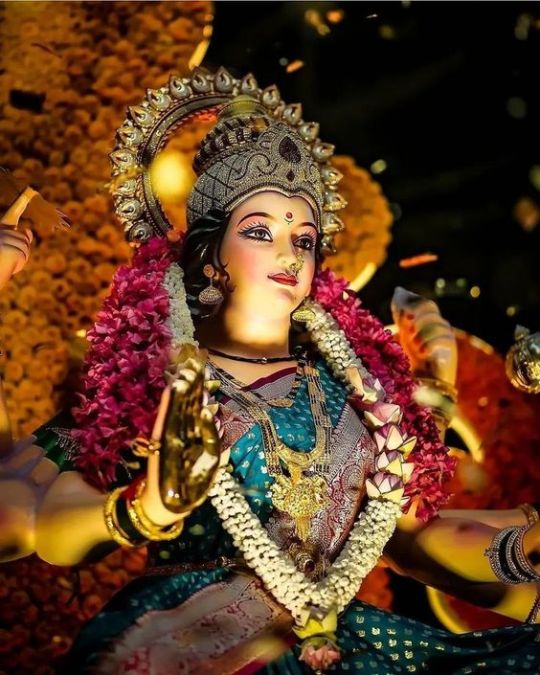
Navratri is a major Hindu festival celebrated across India with great enthusiasm and devotion. The word "Navratri" is derived from two Sanskrit words: "Nav" meaning nine, and "Ratri" meaning nights. As the name suggests, Navratri spans nine nights and ten days, and it is dedicated to the worship of the Hindu goddess Dugra, who symbolizes purity, power, and divinity.
Navratri celebrations are elaborate and vibrant affairs that bring communities together in joyous worship and cultural festivities. Here's an overview of how Navratri is celebrated:
Preparation: Before Navratri begins, households and temples are cleaned and adorned with colorful decorations, flowers, and lights. People also buy new clothes and prepare traditional sweets and delicacies.
Devotional Practices: During the nine nights of Navratri, devotees observe fasts and engage in prayers and rituals dedicated to Goddess Durga. Special pujas (worship ceremonies) are conducted in temples and homes, where offerings such as flowers, fruits, and incense are made to the goddess.
Navratri Puja: Each day of Navratri is dedicated to worshiping a specific form of Goddess Durga known as Nava durga. Devotees recite prayers, chant mantras, and perform aarti (rituals involving the waving of lamps) to honor the goddess and seek her blessings.
Garba and Dandiya Raas : The most prominent feature of Navratri celebrations is the Garba and Dandiya Raas dance performances. In the evenings, people gather in open spaces or community halls adorned with colorful lights and decorations. They form circles and dance to the rhythmic beats of traditional folk music, singing devotional songs in praise of the goddess. Dandiya Raas involves dancing with sticks, adding an extra element of excitement to the festivities.
Traditional Attire: Participants dress in traditional attire such as colorful Chania cholis (embroidered skirts and blouses for women) and (traditional shirts) for men. The vibrant colors and intricate designs of the attire add to the festive atmosphere.
Community Participation: Navratri celebrations are inclusive, and people from all age groups and backgrounds come together to participate in the festivities. Communities organize Navratri events where everyone is welcome to join in the dancing and merriment.
Cultural Programs: Alongside Garba and Dandiya Raas, Navratri events often feature cultural programs showcasing traditional music, dance performances, and skits related to the mythology and significance of Navratri.
Culmination: The ninth day of Navratri, known as Ramanavami, culminates with special prayers and offerings to the goddess. On the tenth day, known as Vijayadashami or Dussehra, devotees bid farewell to the goddess by immersing or submerging idols of Dogra in water bodies, symbolizing her return to her celestial abode.
2 notes
·
View notes
Text
Dussehra and Vijayadashami: The Triumph of Good over Evil
Do you want to know how to celebrate Dussehra and Vijayadashami, the Hindu festival of victory? Read this article to find out.
Dussehra and Vijayadashami are two names for the same Hindu festival that celebrates the victory of good over evil. It is one of the most important and popular festivals in India, as well as in other countries where Hinduism is practiced. In this article, you will learn about the history, mythology, significance, celebrations, and astrology of this festival. You will also discover some tips and…

View On WordPress
#: dussehra 2023 date#Dussehra#dussehra and vijayadashami in different regions of india#dussehra celebrations#dussehra images#dussehra rituals#dussehra significance#festival of victory#good vs evil#hindu festivals#how to celebrate dussehra at home#how to celebrate vijayadashami at home#indian culture#indian festivals#indian traditions#ramlila#ravana#triumph of good#vijayadashami#vijayadashami 2023 date#vijayadashami history#vijayadashami images#vijayadashami mythology
0 notes
Text

Kamakshi Devi Brass Oil Deepam
PujaNPujari is selling a high-quality brass diya that is perfect for worshipping Kamakshi Devi, the supreme deity of Kanchipuram. The diya is said to bring immense luck and is perfect for lighting Akahanda Jyothi during Navaratri. It can hold a lot of oil and can burn for hours, making it a great choice for religious rituals.
Purchase This Kamakshi Devi Brass Oil Deepam.
#spiritual#temple#hinduism#festival#pooja#ritual#india#dussehra#navratri#diwali#indian festival#diyas#october#thursday
1 note
·
View note
Text
10 Beautiful Vocabulary for the Navratri Celebration

Navratri Spirit: Honoring Goddess Durga
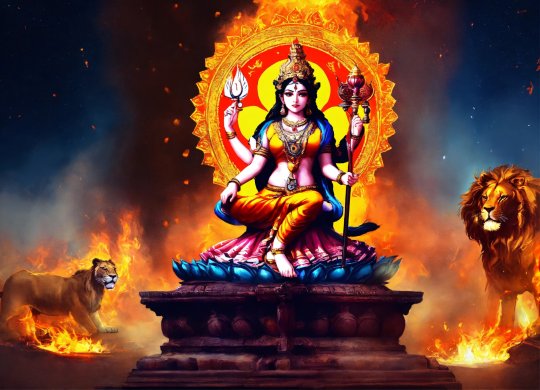
The vibrant spirit of India comes alive during Navratri, a nine-day festival that resonates with faith, festivity, and cultural grandeur. As the name suggests, "Nav" means nine and "Ratri" means nights. This festival is a joyous period steeped in beautiful traditions and customs. Let's delve into the dazzling world of Navratri with some exquisite vocabulary to enrich your understanding of this spectacular celebration.
1. Auspicious (au-spish-us)

Navratri is considered an extremely auspicious time. "Auspicious" signifies an occasion filled with good fortune and blessings. Devotees believe that prayers and observances undertaken during these nine nights hold special significance and bring prosperity.
2. Reverence (rev-er-ence)
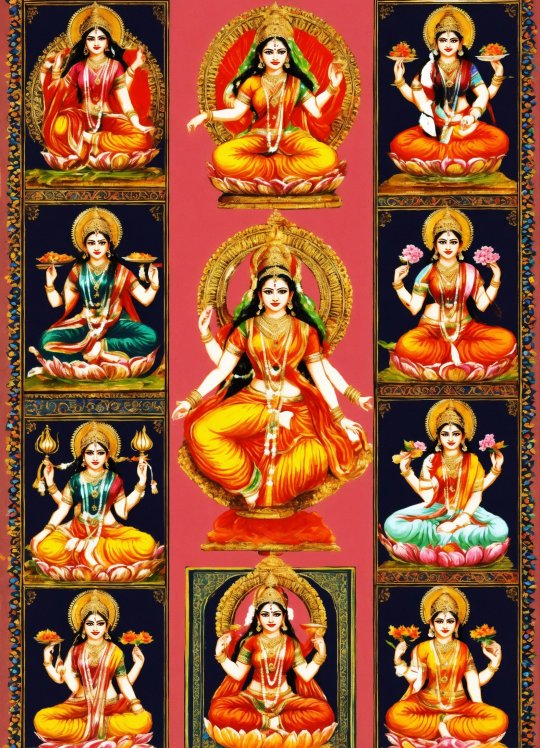
The nine days of Navratri are dedicated to worshipping the nine divine forms of Goddess Durga. "Reverence" refers to the deep respect and devotion offered to the Goddess. Hindus across the world observe pujas (prayers) and rituals with utmost reverence, seeking the blessings of Durga for strength, wisdom, and protection.
3. Panoply (pan-o-ply)
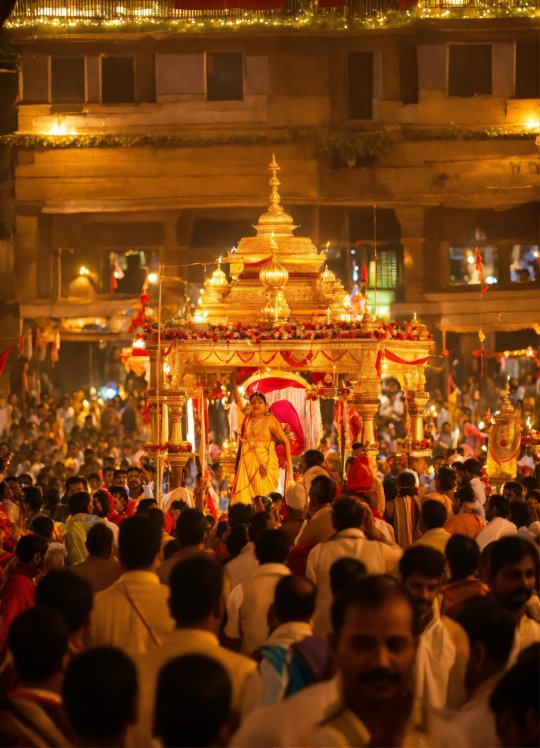
Navratri is a visual feast for the senses. Homes and pandals (temporary shrines) are adorned with vibrant decorations, creating a dazzling "panoply" of colors and textures. Imagine intricate rangolis (floor art), strings of marigolds, and shimmering diyas (lamps) – a true spectacle of beauty.
4. Ethereal (ee-the-ri-al)

The atmosphere during Navratri is charged with a sense of otherworldly beauty. "Ethereal" describes something delicate and heavenly, and this perfectly captures the feeling one gets amidst the chants, devotional music, and the gentle flickering of diya flames.
5. Resplendent (ri-splen-dent)

Devotees dress up in their finest attire during Navratri. "Resplendent" signifies being magnificently beautiful and radiant. Imagine sarees in rich silks, adorned with intricate jewellery – a dazzling display of cultural resplendence.
6. Gastronomical (gas-tro-no-mi-cal)

Navratri is a time to indulge in delicious vegetarian fare. "Gastronomical" refers to the art of good eating, and Navratri offers a plethora of delectable dishes specially prepared for the occasion. Think of flavorful sweets like halwa and savoury dishes like sabudana khichdi – a true treat for the taste buds.
CREATE YOUR DREAM BOOK NOW
7. Jubilant (joo-bi-lant)
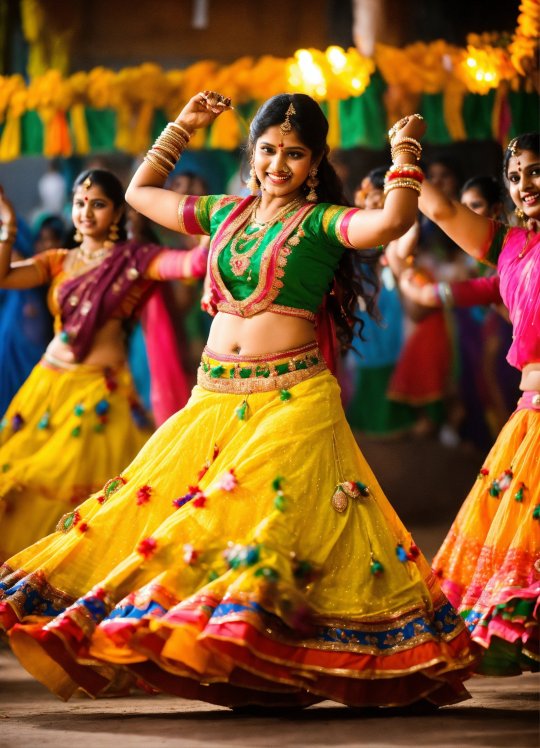
The spirit of Navratri is infectious. The air is filled with the sounds of laughter, music, and joyous celebrations. "Jubilant" describes a feeling of great happiness and triumph, perfectly capturing the mood of this vibrant festival.
8. Propitious (pro-pish-us)
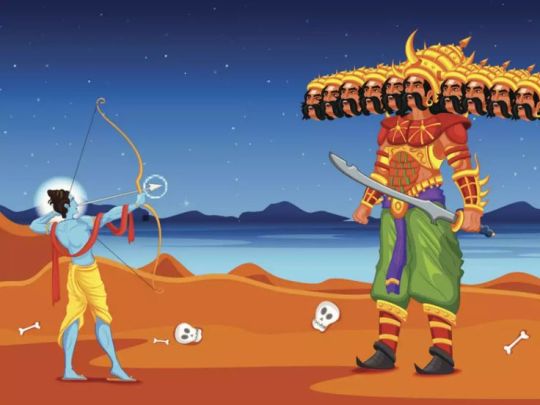
The tenth day after Navratri, Dussehra, marks the victory of good over evil. "Propitious" signifies favorable or auspicious. Dussehra is seen as a day that ushers in good times and eliminates negativity.
9. Confluence (con-flu-ence)

Navratri transcends religious boundaries and brings people together. "Confluence" signifies a flowing together, and this beautifully captures the spirit of the festival. People from all walks of life come together to celebrate, share stories, and strengthen community bonds.
10. Euphoria (yoo-for-ee-ah)

Navratri leaves a lasting impression. "Euphoria" describes a feeling of intense happiness and excitement. The festival leaves devotees feeling uplifted, inspired, and carrying the positive energy forward throughout the year.
Beyond the Words: The Enchantment of Navratri
These words merely offer a glimpse into the magic of Navratri. The true essence of the festival lies in experiencing it firsthand. The aroma of incense filling the air, the rhythmic beats of the dhol (drum), the vibrant colours, and the feeling of community – all contribute to creating an unforgettable experience.
So, if you have the opportunity to witness Navratri, embrace it with open arms. Let yourself be enveloped by the joyous spirit, savour the delicious food, and appreciate the beauty of this time-honoured tradition. You might discover a new facet of Indian culture and return home with a heart brimming with "euphoria."
Don't miss out on our other blog posts!
2 notes
·
View notes
Text
Discover the Top Destinations for Celebrating Dussehra: Best Places to Visit

Dussehra, also known as Vijayadashami, is one of the most vibrant and widely celebrated festivals in India. It marks the triumph of good over evil and is a time when communities come together to celebrate with great fervor and enthusiasm. If you’re looking to immerse yourself in the spirit of Dussehra, here are some of the best places to visit in Dussehra.
1. Mysuru, Karnataka Mysuru, renowned for its grand Dussehra celebrations, tops the list of must-visit places during this festival. The city’s magnificent Mysore Palace is illuminated with thousands of lights, creating a mesmerizing spectacle. The royal procession, or “Jumbo Savari,” features beautifully decorated elephants and traditional dancers, making it a sight to behold.
2. Kolkata, West Bengal In Kolkata, Dussehra is celebrated with unmatched grandeur as Durga Puja. The city comes alive with beautifully crafted idols of Goddess Durga, cultural performances, and artistic pandals (temporary structures). Witness the elaborate immersion processions and immerse yourself in the rich culture of West Bengal during this time.
3. Varanasi, Uttar Pradesh Varanasi, one of the holiest cities in India, celebrates Dussehra with a unique twist. Devotees gather at the ghats along the Ganges River to witness the “Ravan Dahan,” where giant effigies of the demon king Ravana are set ablaze. The combination of spirituality and festivity creates a memorable experience.
4. Kota, Rajasthan Kota is famous for its traditional Ramayana plays during Dussehra. These plays, known as “Ramlila,” depict the life of Lord Rama and his victory over Ravana. The city’s vibrant processions and cultural events make it a fantastic destination for Dussehra enthusiasts.
5. Kullu, Himachal Pradesh Kullu in Himachal Pradesh celebrates Dussehra in a unique style with a week-long fair. The highlight is the colorful and lively processions, featuring idols from various local temples. It’s a perfect blend of tradition, culture, and natural beauty, as Kullu is surrounded by the stunning Himalayan landscape.
6. Delhi The capital city of India also observes Dussehra with great enthusiasm. The iconic Red Fort hosts a spectacular Ravan Dahan event, attracting thousands of visitors. Additionally, various cultural programs and fairs are organized throughout the city during the festival.
7. Bastar, Chhattisgarh For a more offbeat Dussehra experience, head to Bastar in Chhattisgarh. Here, you can witness the unique and ancient “Bastar Dussehra” celebrations. The tribal communities showcase their rich culture through traditional dance, music, and rituals.
In conclusion, Dussehra is a time of joy and unity in India, and these destinations offer diverse and enriching experiences to celebrate this auspicious occasion. Whether you’re drawn to the grandeur of Mysuru, the artistry of Kolkata, or the spirituality of Varanasi, each place has its unique way of embracing the festival’s spirit. Plan your trip to one of these best places to visit in Dussehra and enjoy to the fullest.
For more travel tips and information on celebrating festivals in India, stay tuned to our website. Happy Dussehra!
2 notes
·
View notes
Text
Kullu Dussehra: Danvender Singh, Son of Raja Maheshwar Singh, Joins Nitya Thakur on TNT Show Podcast
youtube
Discover the fascinating stories behind Kullu Dussehra, the royal connections, and the significance of this iconic festival to the local community. Whether you're a history buff, a culture enthusiast, or simply curious about Indian festivals, this episode is packed with insights that you won’t want to miss! 🔥 Tune in to hear firsthand accounts, personal anecdotes, and unique perspectives on Kullu Dussehra, its rituals, and its role in preserving cultural heritage. Learn about the rituals, festivities, and the profound impact of this celebration on the region. Don’t forget to like, subscribe, and hit the notification bell for more engaging discussions, exclusive interviews, and deep dives into Indian culture and traditions! Let’s explore the legacy together! 🌟
1 note
·
View note
Text
Individual Image Source: Instagram, @cuttackpujafestivals and the Samaja Odia daily.
Shodasha Dinatmaka or 16 day puja of Devi Durga begins on the Krushna Paksha Dwitiya of Ashwina month i.e. 8 days prior to Mahalaya and continues till Vijayadashami. This puja is carried out in all Shakti Peethas of Odisha. Though, rituals vary from temple to temple, the common ritual is that the Goddess is attired in different forms for each day like Rajarajeshwari, Bhubaneswari, Bagalamukhi, Jayadurga etc. The different attires are called Besas or Shodasha Besa.
These are the images of Shodasha Besa of different temples of Cuttack according to dates, from the start of the Navratri i.e. 15th October 2023 till Dussehra i.e. 24th October 2023.
#shodasha besa#durga puja#durga puja cuttack#odiablr#desiblr#desi tumblr#goddess durga#devi temples of cuttack#cuttack
4 notes
·
View notes
Text
The Cultural Significance of Mysore Silk Sarees in Indian Festivals
Mysore Silk Sarees are a treasured part of India's rich textile heritage, embodying elegance, tradition, and cultural pride. Woven with pure silk and adorned with gold zari, these sarees are synonymous with grandeur and grace, making them an integral part of Indian festivals and celebrations.
A Symbol of Tradition and Elegance
Indian festivals are deeply rooted in tradition, and attire plays a crucial role in these celebrations. Mysore Silk Sarees, known for their rich texture and vibrant colors, perfectly complement the festive spirit. The intricate zari work and minimalistic yet regal designs make them a preferred choice for women across generations.
Festivals and Mysore Silk Sarees
Diwali – The festival of lights is incomplete without traditional attire. Women prefer Mysore Silk Sarees for their lustrous appeal, enhancing the joy of the celebration.
Dussehra – Mysore, being the heart of Dussehra celebrations, witnesses an immense demand for these sarees. The royal look of Mysore Silk adds to the grandeur of this festival.
Pongal & Onam – South Indian festivals like Pongal and Onam emphasize cultural roots, where silk sarees symbolize prosperity and devotion.
Weddings & Religious Ceremonies – Mysore Silk Sarees are not limited to festivals; they are also a staple in weddings and religious rituals, symbolizing purity and elegance.
The Legacy and Craftsmanship
Mysore Silk Sarees are produced using the finest silk and 100% pure gold zari, ensuring unmatched quality and durability. The Karnataka Silk Industries Corporation (KSIC) continues to uphold the legacy of these sarees, preserving their authenticity and timeless appeal. The careful weaving process and expert craftsmanship reflect India's dedication to preserving its cultural heritage.
A Timeless Heirloom
Owning a Mysore Silk Saree is not just about wearing a piece of fabric; it is about embracing a legacy. Passed down through generations, these sarees hold sentimental value and remain an essential part of Indian festivities and ceremonies.
Conclusion

Mysore Silk Sarees are more than just festive attire—they are an embodiment of culture, tradition, and craftsmanship. Their timeless elegance makes them a cherished possession for every Indian woman, ensuring they remain an everlasting part of India's celebratory spirit. Whether worn during festivals, weddings, or religious occasions, these sarees continue to be a symbol of grace and tradition, adding a touch of royalty to every celebration.
0 notes